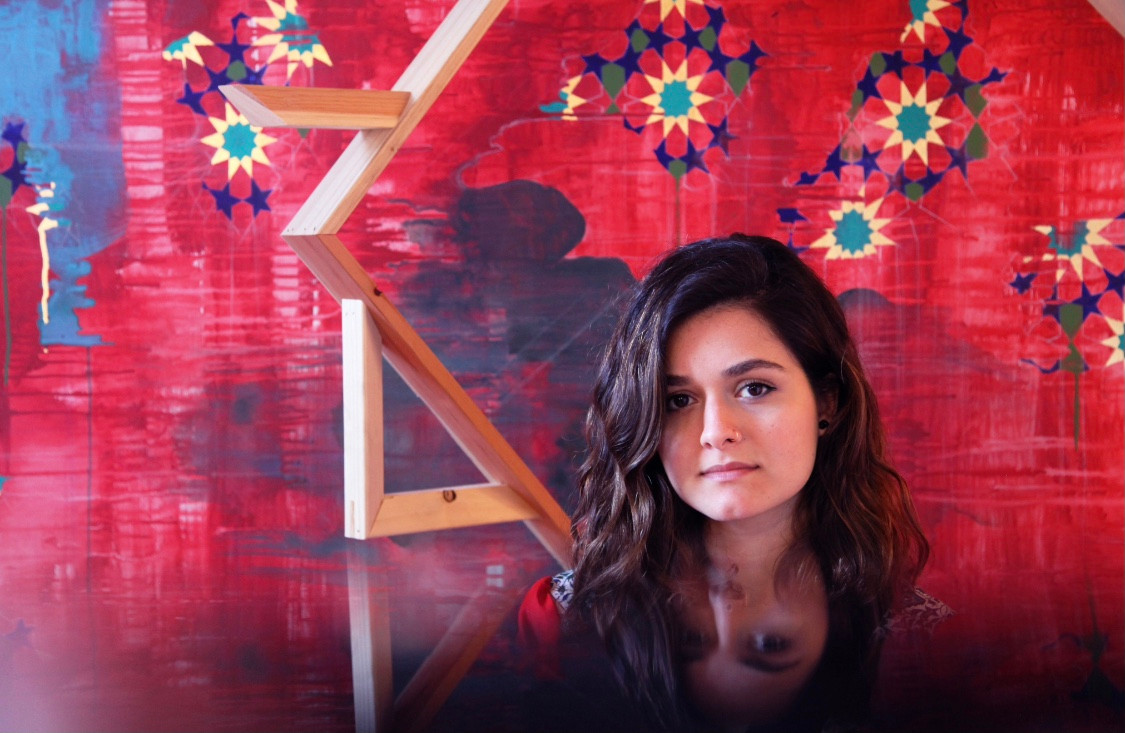Meet Ghazal Rahimi: Artist

We had the good fortune of connecting with Ghazal Rahimi and we’ve shared our conversation below.
Hi Ghazal, let’s talk legacy – what do you want yours to be?
The only meaningful legacy I can leave in this world is through what my art has the power to do. As an artist, the work I create, after leaving the studio, begins to find her audience and impact them. Artworks aren’t made/meant to last forever. They may get lost, damaged, and distorted in time. Some of them are actually meant to get broken and destroyed. But, the impact they can make (or have once made) on people, will continue to change their experiences, shape important questions in their minds, and shift their cultural concerns in time. This is the only legacy I care to leave in this world, to inspire curiosity and empathy toward change, and build a more truthful and just world.



Can you open up a bit about your work and career? We’re big fans and we’d love for our community to learn more about your work.
I moved to the United States at the age of twenty from Iran, to pursue art as a professional career, and ever since, I’ve grown to learn more about my position in America as a woman, an immigrant, and a person of color. Coming from a Third World country where, as an artist and creator I had to work hard to step beyond assigned limits for women, and fight the issues of censorship, I learned that if I don’t speak my reality, my truth, they will not fail to speak for me. My way of speaking forward is my own profession to art, writing, and pedagogy. My art career is equally informed by art-making, teaching, reading, and writing. My art practice moves between painting, drawing, sculpture, and installation. Within my practice, I explore concepts of duality, cultural assimilation, and simultaneous realities in oneself. Based on the theoretical position that exposing oneself to a liminal space (in-between the familiar and the unfamiliar and/or the tradition and the revolution), is an aesthetic process. I explore what may change and shift in cultural transitions and what are the challenges one faces when going through modernization and what gets lost in this transition? I utilize Islamic geometric patterns and arabesque margins and shatter their designs to represent liberation from cultural pressure and geopolitical borders, and more importantly to create a sense of destruction that leads to new growth. By presenting the Islamic and abstract patterns out of their historical function and purpose (that was beauty and to show the notion of the divine,) I want to bring attention to how cultural heritage could be reinvented and used as a corridor to progressive modernity. Both my research and my art practice have been shaped around questions around cross-cultural issues, decolonization, and contrasting Eastern and Western art history. As an artist, maker, and teacher, I think of art as a powerful tool for change. I’m interested in its capabilities beyond gallery walls/spaces, assessing its value further than its worth as a commodity. I have been making some of my smaller pieces available for sale through my website as part of my studio practice. I believe everyone should be able to own/afford art, including people who can’t go/don’t go to galleries. these pieces are related, and not isolated from my ongoing projects. I look forward to expanding my studio brand and art practice in an effort to engage more people in looking at art, making art, and collecting art.
Let’s say your best friend was visiting the area and you wanted to show them the best time ever. Where would you take them? Give us a little itinerary – say it was a week long trip, where would you eat, drink, visit, hang out, etc.
pre-covid time, I would take them to some of these places: Manhattan Beach is really nice, just to walk on the beach and around the neighborhood. There are so many places I love to go to in the Art District area. Hauser & Wirth Gallery and the Manuela restaurant is one of my favorites. Abbot Kinney Blvd is always full of life. I would take them there for a walk and also to Salt & Straw ice cream.


 The Shoutout series is all about recognizing that our success and where we are in life is at least somewhat thanks to the efforts, support, mentorship, love and encouragement of others. So is there someone that you want to dedicate your shoutout to?
The Shoutout series is all about recognizing that our success and where we are in life is at least somewhat thanks to the efforts, support, mentorship, love and encouragement of others. So is there someone that you want to dedicate your shoutout to?
Huge shoutout to my parents and my sister who have always supported me and believed in me throughout my career . My friends who were always there for me. Shoutout to my mentors who have had the biggest impact on my artistic development. Shoutout to a long line of women who inspired me with their artworks, poetries, films, books, and voices. Among them Forough Farrokhzad, an Iranian poet and filmmaker, who gave me hope and inspired my way of thinking about women sexuality and liberation.
Website: https://ghazalrahimi.com/
Instagram: https://www.instagram.com/ghazalrahimi_studio/?hl=en
Linkedin: https://www.linkedin.com/in/ghazal-rahimi-105376199/
Twitter: https://twitter.com/GhazalRahimi7
Image Credits
Ghazal Rahimi, © Ghazal Rahimi
